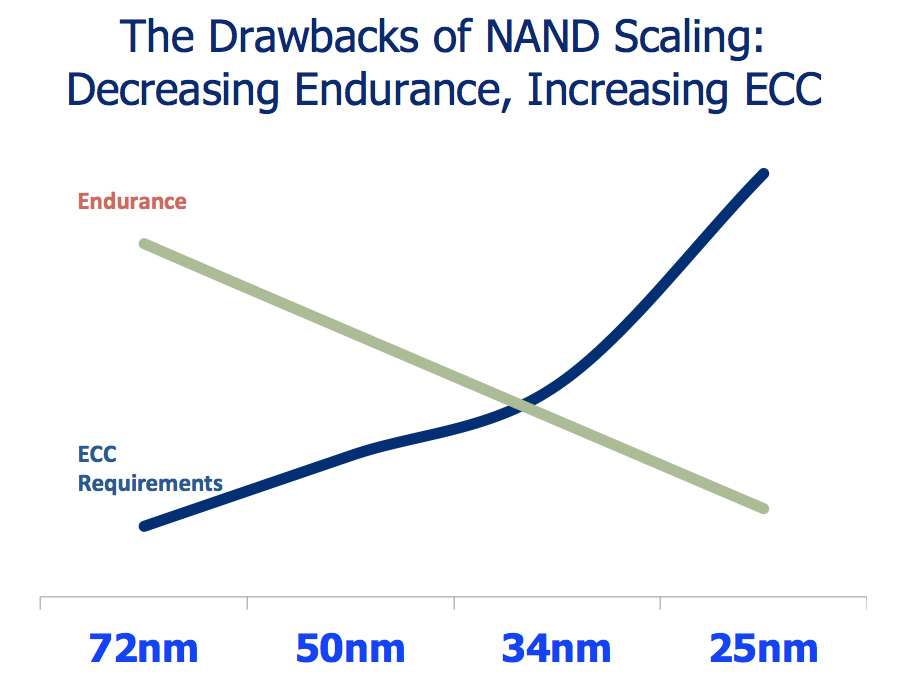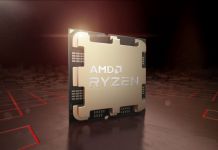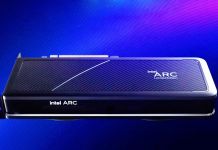Micron has presented a new NAND memory technology to tackle the problems that has occured during the development and production of new flash memory circuits. As the memory technology gets smaller the memory cell lifespan has a tendency to drop, something Micron tackles by adding ECC (Error-Correcting Code) to the memory circuits.
Micron has named the new technology ClearNAND and instead of letting the memory controller identify and corrent bit errors the memory cells can do it themselves. The idea is to off-load the memory controller that sometimes gets to much responsibilities for keeping the memory circuits and data fresh and healthy. SandForce is one company that has baked in powerful ECC functions into its SSD processors but with the development we see in NAND it seems more sensible to add it to the memory circuits directly to make the already expensive memory controllers less stressed.
 |
 |
The reason is fairly obvious. When the first SSDs became popular NAND memory was made with 50nm technology and each MLC (Multi-level Cell) NAND had a lifespan of 10,000 writes/deletes. As the technology moved on new manufacturing technologies saved money and increased storage density, but at the same time the lifespan of a cell has dropped dramatically. With 25nm MLC NAND there is a lifespan of around 3,000 writes/deletes, a number that was initially just 1,000 writes/deletes.
Micron’s Standard ClearNAND products come in 8 to 32 gigabyte (GB) packages, and are intended to remove the error correction code (ECC) burden from the host processor with minimal protocol changes compared to raw NAND. The Standard ClearNAND portfolio is targeted for portable media players and other consumer electronic devices.
To avoid the memory cells being used when not needed or cleared because of bit errors the damend for error correction increases and Micron hopes that its new ClearNAND technology will appeal. ClearNAND is pin-compatible with regular 25nm NAND circuits and is a solid alternative for storage makers that doesn’t want to build in ECC functionality into controller. The possible difference between this technology and controller-based ECC is a bit uncertain, but up until 2014 Micron expects that ClearNAND and similar solutions will be market leading.















